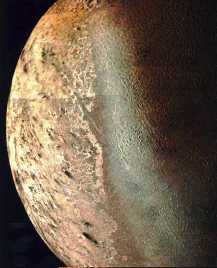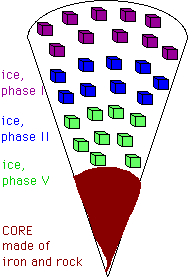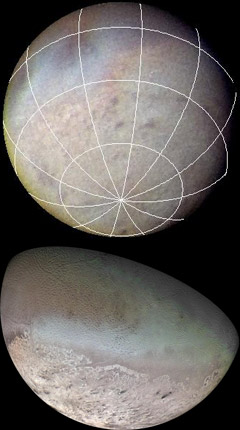This is an image of Triton that has been image processed.
Click on image for full size
NASA
Surface of Triton
Image processing can produce a view such as one might see if you were present on the surface of Triton.
You might also be interested in:

How did life evolve on Earth? The answer to this question can help us understand our past and prepare for our future. Although evolution provides credible and reliable answers, polls show that many people turn away from science, seeking other explanations with which they are more comfortable.
...more
This image of Triton reveals many neat features of its surface. The surface of Triton's surface is a mix of Ganymede's and Europa's surfaces. Old areas of Triton's surface have many craters and younger
...more
Triton was discovered by W. Lassell in 1846. Of the 8 moons, it is the 2nd farthest from Neptune. Triton may be one of the largest of the icy moons with a diameter that is about half the distance across
...more
Not only ice but several different kinds of snow (crushed ice) have been found on the surface of Triton. An idea of what the inside of Triton is made of can only be guessed because the Voyager spacecraft
...more
Triton is mostly made of ice, therefore there is probably a small core of some rocky material at the center, covered with different kinds of ice. If Triton is warm enough inside, then there could be water.
...more
Triton is the largest moon of Neptune. It is a very odd moon. The poles of Triton are especially interesting. Triton has a polar ice cap at the South Pole. Earth has ice caps at its poles too. On Earth
...more
The atmosphere of Neptune is a lot like that of Uranus, and unlike that of Saturn and Jupiter. On Jupiter and Saturn, the atmosphere is mostly made of the simple molecules hydrogen and helium. The atmosphere
...more
There are four ideas for where the atmosphere comes from: 1. that the planet-elements which made the planets made the atmosphere too, 2. that the atmosphere was drawn to the planet from the cloud out of
...more









